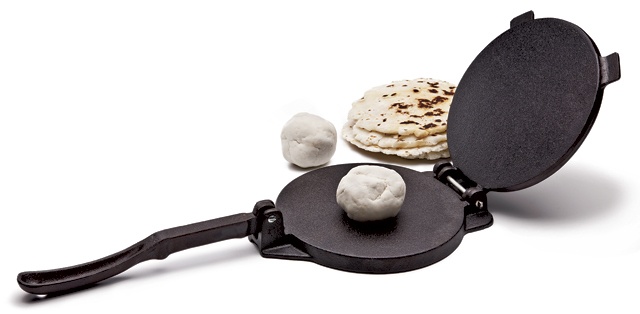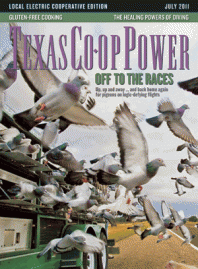As awareness of food allergies increases, more and more people are discovering previously undiagnosed sensitivities to what they’ve been eating. One of the most baffling and debilitating of the food allergies is an intolerance to gluten, a protein found in grains such as wheat, rye and barley.
People with this problem can find themselves plagued with a variety of symptoms, such as digestive system discomfort, chronic fatigue, joint pain and neurological effects. The most severe form of gluten intolerance is called celiac disease, an autoimmune disorder that can lead to serious complications if dietary changes are not implemented.
It is estimated that 3 million Americans have celiac disease—about 1 in 133 people. Knowing little about the condition, I consulted a recent book in the “For Dummies” series, called Living Gluten-Free For Dummies (2010, Wiley Publishing) and the Celiac Disease Foundation website, www.celiac.org.
Among other things, I learned what people with gluten intolerance can eat—and what they should avoid.
I also learned quite a bit from comments sent in by Texas Co-op Power readers—like Nora Oglesby of Wylie, a Farmers Electric Cooperative member—who have learned to live with their conditions. Oglesby said she’s had dietary-related health issues her whole life, but only in the past couple of years did it become clear to her that she had celiac disease, as well as a dairy intolerance. She wrote that her entire approach to food and eating had to change.
“The task of creating interesting, delicious, gluten-free, dairy-free and easy-to-digest foods was once an all-consuming daily hurdle,” she wrote. “Thankfully, after two years I am more comfortable with what I can and cannot eat. I have had more successes than failures once I changed my philosophy about food. I stopped trying to duplicate favorites of my youth, because nothing can replace the foods we grew up eating and loving. Instead my goal is to use ingredients I like to eat, taste good, are good for my body and satisfy my cravings.”
Janette Fowler of Hereford, a Deaf Smith Electric Cooperative member and alternative health-care practitioner, said her husband, Eric, had been plagued with nonstop headaches for years that did not respond to pain relievers. Through her practice, she learned about gluten-free eating and suggested he not eat bread products—the headaches went away. Whenever he ate something with gluten in it, they returned. This “elimination diet,” in which you omit a suspected food allergen from your eating regime, is a diagnostic tool for discovering such allergies.
Gluten-free living became important to Karen Ahrens, a Grayson-Collin Electric Cooperative member from Anna, after her daughter, Lauren, was diagnosed with celiac disease. “Everyday recipes and basic baking had gone out the window,” Ahrens wrote. “I thought if I was overwhelmed, others had to be, also.” So she started a company, Lauren’s Gourmet, where she offers gluten-free baking mixes. The mixes are available at several stores in North Texas and on her website.
Baked goods and pastries are definitely some of the most difficult items to re-create without glutinous ingredients. Here is one from the Living Gluten-Free book that yields a pretty good flour tortilla:
Gluten-Free Flour Tortillas
2 cups gluten-free flour mixture
2 tablespoons xanthan gum
1 teaspoon sugar
1 1/4 teaspoons salt
1 teaspoon baking powder
2 tablespoons shortening
Heat cast-iron skillet over medium heat. In large mixing bowl, combine flour mixture, xanthan gum, sugar, salt and baking powder. Cut in shortening. Add 1 cup warm water about 1/4 cup at a time, stirring after each addition, until dough is smooth. Form into balls about the size of tennis balls. Put dough between two sheets of wax paper and use rolling pin to flatten into discs about 1/8 inch thick and 10 to 12 inches across. Use separate sheets of paper for each dough ball. When all dough has been rolled out, remove wax paper from first tortilla and cook on hot skillet about 45 seconds on one side, until cooked side has brown flecks (uncooked side may start to bubble). Flip and cook about 20 seconds on other side. Peek underneath the tortilla to see whether it has brown flecks, a sign it is done.
Servings: 6. Serving size: 1 tortilla. Per serving: 199 calories, 2.5 g protein, 4.4 g fat, 36.6 g carbohydrates, 3.8 g dietary fiber, 582 mg sodium, 2.0 g sugars, 2 mg cholesterol
Gluten-Free Flour
There are several gluten-free flour mixtures, including commercially prepared ones. If you’d like to make your own, Living Gluten-Free For Dummies suggests you combine two parts (equal amounts) rice flour with 2/3 part potato starch flour and 1/3 part tapioca flour. For example, if you wanted to make 6 cups of flour mixture, you’d use 4 cups of rice flour, 1 1/3 cups potato starch and 2/3 cup tapioca flour.


